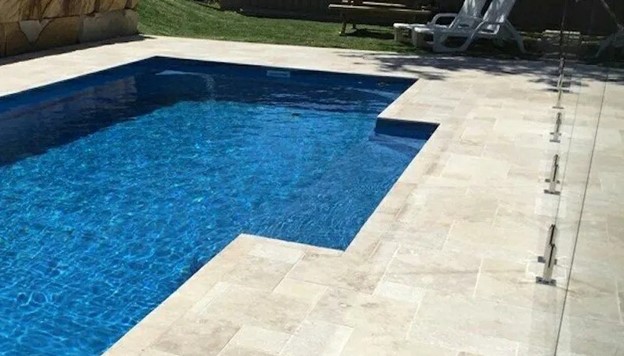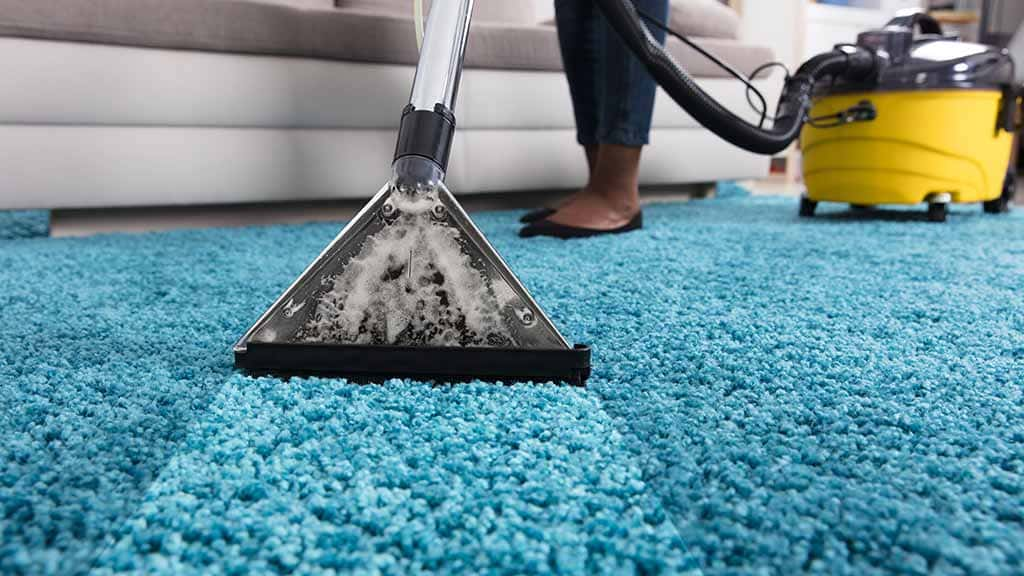Banishing Spots and Spills: Mastering Effective Stain Removal Techniques.
Introduction:
Effective Stain Removal Techniques: Banishing Spots and Spills
Stains and spills are an inevitable part of life, whether it’s a coffee stain on your favorite shirt or a red wine spill on your pristine carpet. However, with the right stain removal techniques, you can bid farewell to these unsightly marks and restore your belongings to their former glory. In this guide, we will explore various effective stain removal techniques that will help you tackle a wide range of stains, from common food and beverage spills to stubborn ink and grease marks. With these tried and tested methods, you’ll be equipped to handle any stain that comes your way, ensuring that your belongings stay spotless and looking their best.
The Power of Pre-Treating: Effective Stain Removal Techniques
Stains are an inevitable part of life. Whether it’s a spilled glass of red wine on a white carpet or a smear of ketchup on a favorite shirt, stains can be a real headache. However, with the right techniques and a little bit of know-how, you can banish those spots and spills for good.
One of the most effective ways to tackle stains is through pre-treating. Pre-treating involves treating the stain before washing or cleaning the affected item. This step is crucial because it helps to break down the stain and loosen its grip on the fabric or surface.
There are several pre-treating techniques that you can use depending on the type of stain you’re dealing with. For example, for oil-based stains like grease or lipstick, you can try using a dishwashing liquid or a grease-fighting detergent. Simply apply a small amount to the stain, gently rub it in, and let it sit for a few minutes before washing as usual.
For protein-based stains like blood or sweat, you can try using an enzyme-based cleaner. These cleaners contain enzymes that break down the proteins in the stain, making it easier to remove. Apply the cleaner directly to the stain, let it sit for a few minutes, and then wash as usual.
For stubborn stains like red wine or coffee, you can try using a mixture of hydrogen peroxide and dish soap. Mix equal parts of hydrogen peroxide and dish soap, apply it to the stain, and let it sit for a few minutes before washing. Be sure to test this mixture on a small, inconspicuous area first to make sure it doesn’t cause any damage to the fabric.
In addition to pre-treating, there are a few other tips and tricks that can help you effectively remove stains. First, always treat the stain as soon as possible. The longer a stain sits, the harder it will be to remove. So, as soon as you notice a stain, take action.
Second, always blot a stain instead of rubbing it. Rubbing a stain can actually push it deeper into the fabric or surface, making it even harder to remove. Instead, use a clean cloth or paper towel to blot the stain, working from the outside in to prevent it from spreading.
Finally, be patient. Some stains may require multiple treatments or a combination of different techniques to completely remove. Don’t give up after the first attempt. Keep trying different methods until the stain is gone.
In conclusion, pre-treating is a powerful tool in the battle against stains. By treating the stain before washing or cleaning, you can break it down and make it easier to remove. Whether you’re dealing with oil-based, protein-based, or stubborn stains, there are pre-treating techniques that can help. Remember to treat the stain as soon as possible, blot instead of rubbing, and be patient. With these effective stain removal techniques, you can banish spots and spills for good.
Say Goodbye to Stubborn Stains: Tried and Tested Methods for Effective Stain Removal
Effective Stain Removal Techniques: Banishing Spots and Spills
Stains are an inevitable part of life. Whether it’s a spilled glass of red wine on your favorite white shirt or a stubborn grease mark on your brand-new carpet, stains can be a real headache. But fear not, because there are tried and tested methods for effective stain removal that can help you say goodbye to those stubborn spots and spills.
One of the most important things to remember when it comes to stain removal is to act quickly. The longer a stain sits, the harder it becomes to remove. So, as soon as you notice a stain, it’s important to take immediate action.
For common stains like coffee, tea, or juice, start by blotting the stain with a clean cloth or paper towel to remove as much of the liquid as possible. Then, mix a solution of one part dish soap and two parts warm water. Gently dab the stain with the solution using a clean cloth, working from the outside in to prevent spreading. Rinse the area with cold water and repeat the process if necessary.
For oil-based stains like grease or lipstick, sprinkle some baking soda or cornstarch on the stain to absorb the oil. Let it sit for a few minutes, then brush or vacuum it away. Next, apply a small amount of dish soap directly to the stain and gently rub it in with a clean cloth. Rinse with warm water and repeat if needed.
When it comes to removing ink stains, rubbing alcohol is your best friend. Dampen a clean cloth with rubbing alcohol and gently blot the stain, being careful not to rub it in further. Continue blotting until the stain is gone, then rinse with cold water and wash as usual.
For tough stains like red wine or blood, hydrogen peroxide can work wonders. Start by blotting the stain with a clean cloth to remove any excess liquid. Then, pour a small amount of hydrogen peroxide directly onto the stain and let it sit for a few minutes. Blot the stain again, this time with a clean cloth dampened with cold water. Repeat the process until the stain is gone.
When dealing with stains on delicate fabrics like silk or wool, it’s important to be extra cautious. Start by blotting the stain with a clean cloth to remove any excess liquid. Then, mix a solution of one part white vinegar and two parts water. Gently dab the stain with the solution using a clean cloth, being careful not to rub too hard. Rinse with cold water and repeat if necessary.
In conclusion, effective stain removal techniques can help you banish spots and spills from your clothes, carpets, and upholstery. Remember to act quickly, use the appropriate cleaning solutions, and be gentle when treating delicate fabrics. With these tried and tested methods, you can say goodbye to stubborn stains and keep your belongings looking fresh and clean.
From DIY to Professional: Exploring Different Approaches to Effective Stain Removal Techniques
From DIY to Professional: Exploring Different Approaches to Effective Stain Removal Techniques
Stains are an inevitable part of life. Whether it’s a spilled glass of red wine on a white carpet or a stubborn grease mark on your favorite shirt, stains can be a real headache. Fortunately, there are a variety of stain removal techniques that can help banish those spots and spills. In this article, we will explore different approaches to effective stain removal, from DIY methods to professional solutions.
When it comes to tackling stains, many people prefer to start with DIY techniques. These methods often involve using common household items to remove stains. One popular DIY stain remover is a mixture of dish soap and hydrogen peroxide. This combination can be effective in removing a wide range of stains, from coffee and tea to blood and grass. Simply mix equal parts dish soap and hydrogen peroxide, apply it to the stain, and let it sit for a few minutes before rinsing. This method is particularly useful for fresh stains, as it can help prevent them from setting in.
Another DIY stain removal technique involves using baking soda and vinegar. Baking soda is known for its ability to absorb odors and lift stains, while vinegar is a natural disinfectant. To use this method, sprinkle baking soda over the stain and then pour vinegar on top. The mixture will create a fizzing reaction, which helps to break down the stain. After letting it sit for a few minutes, scrub the area with a brush and rinse with water. This method is especially effective for removing tough stains like red wine or tomato sauce.
While DIY methods can be effective for many stains, there are some situations where professional help may be necessary. Professional stain removal services have access to specialized equipment and cleaning solutions that can tackle even the toughest stains. For example, steam cleaning is a popular professional technique that uses high-temperature steam to break down and remove stains. This method is particularly effective for removing deep-seated stains and can be used on a variety of surfaces, including carpets, upholstery, and curtains.
In addition to steam cleaning, professional stain removal services often use specialized stain removers that are specifically designed to target different types of stains. These products are formulated with powerful enzymes and solvents that can break down and remove even the most stubborn stains. Professional stain removers are particularly useful for removing stains like ink, oil, and grease, which can be difficult to remove with DIY methods alone.
In conclusion, effective stain removal techniques can make a world of difference when it comes to banishing spots and spills. DIY methods, such as using dish soap and hydrogen peroxide or baking soda and vinegar, can be effective for many stains, especially when used on fresh spills. However, for tougher stains or delicate surfaces, professional stain removal services may be necessary. These services have access to specialized equipment and cleaning solutions that can tackle even the most stubborn stains. Whether you choose to tackle stains on your own or seek professional help, the key is to act quickly and use the right techniques to ensure the best results.In conclusion, effective stain removal techniques are essential for banishing spots and spills. By promptly addressing stains and using appropriate cleaning methods, it is possible to successfully remove various types of stains from different surfaces. Whether it is treating stains with household products or seeking professional help, understanding the nature of the stain and acting quickly are key factors in achieving successful stain removal. With the right techniques and tools, it is possible to restore the appearance of surfaces and eliminate unsightly stains.



